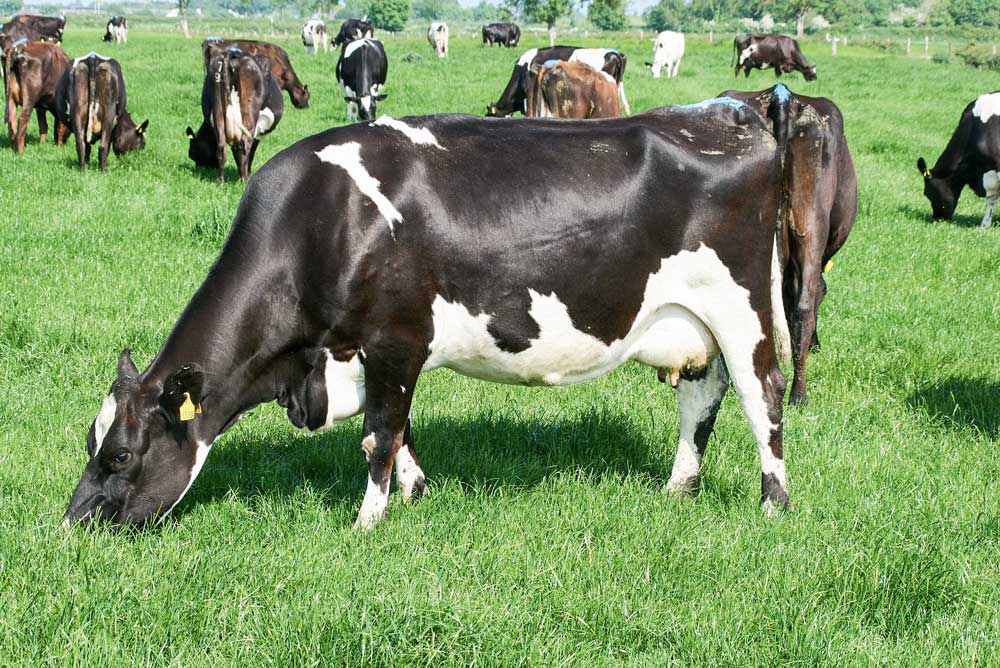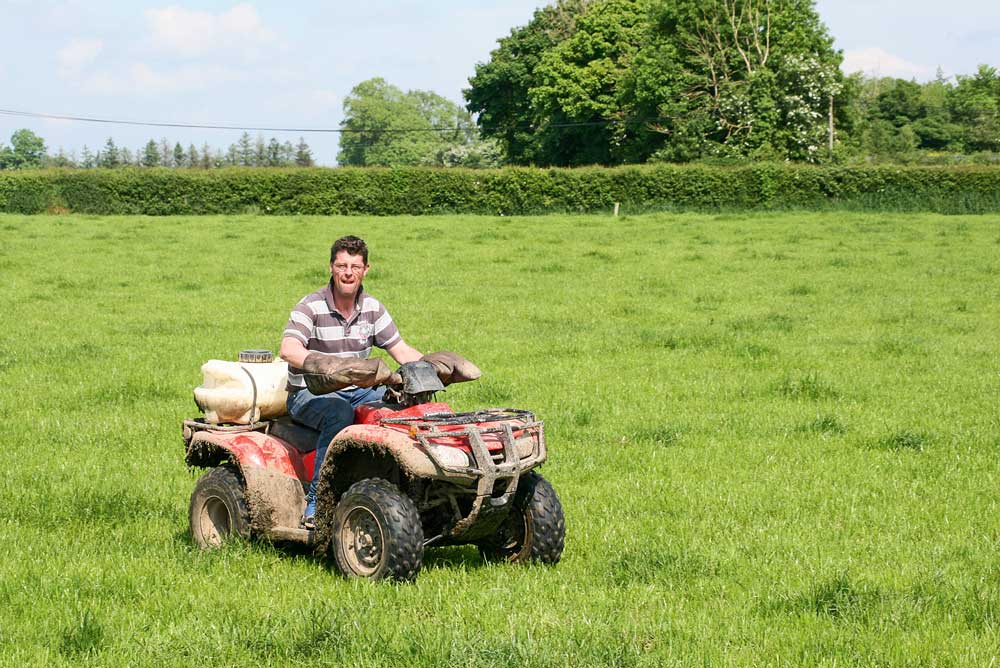Milk from grass: Full speed ahead
By Johannes Thomsen, University of Applied Sciences, Kiel
Even before quotas were discontinued, Irish agronomists and politicians were already announcing that milk production would likely increase by 50 %. Starting off with 5 million t milk under quota, this would have given 7.5 m t by 2020. According to Teagasc (the Irish Agriculture and Food Development Authority), this target was already nearly reached in 2018 when milk output hit 7.49 m t. In fact, in October of that year the exceptionally high deliveries from farms were 20.2% over the same month in 2017.
2019 expectations
This year, Teagasc reckons on a further increase of 6%, if the weather remains favourable and cow numbers are right. Around 85 % of all milk is exported. Alongside butter and skim milk powder, nowadays cheese and yoghurt are also seen as potentially important dairy sector exports with new processing plants now being accordingly built by creameries. And this full speed ahead attitude applies also to marketing campaigns by the processing sector. Politics supports this development: in the last five years over 500 new milk producers and smaller dairy farms have received state support for development and expansion of their respective milk production.
In 2016, Ireland readjusted its export strategy following the Brexit vote. The adoption of new markets was to make the country less dependent on Great Britain as customer. Despite this, a hard Brexit would be a blow for Irish agriculture, especially if border controls are once again introduced between the republic and Northern Ireland.
The production structures
In 2018, cattle numbers in Ireland totalled 6.6 m, of which 1.4 m were milking cows. The 17,500 dairy farms are mainly situated on the fertile soils of south and east Ireland where year-round 1000 to 1500 mm precipitation and a grazing period of around 300 days gives pasture dry matter yields of more than 14 t/ha. Mean farm size is 56 ha, giving a calculated stocking of 80 cows. Average lactation is around 5400 kg at 4.18 % fat and 3.50 % protein for an annual average farm production of 430,000 kg.
The biggest barrier to dairy expansion in Ireland is the very high cost of land. Mainly, growth is through buying, the share of tenanted land being relatively small and rental agreements seldom covering more than a year at a time. Over 90% of the units are family farms with the farmer usually the only worker, although at calving time outside labour, usually students or trainees, is brought onto almost every farm.
Workload: extremely varied over the year
Over 90 % of holdings follow a seasonal calving strategy with the concentration in February and March. Target is to have 90% of cows calving within six weeks, and all herd members within 12 weeks (February, March and April). May and June is the insemination season and the dry period December and January. This means the work load varies greatly through the year. This aspect is assessed by farms as follows:
- Calving season: 60 to 80 hours/week,
- Insemination season: 40 to 50 hours,
- Remaining year: 30 to 40 hours,
- Winter/dry period: 20 hours.
A total 1800 hours standard working time is estimated for one full time labour unit by Irish farm business advisors and enterprise evaluation. And visitors can see that the Irish dairy farmer apparently actually works such hours.
About 10 % of farms specialise in winter milk production. Such enterprises tend to grow forage maize and feed silage with mixer wagons. Winter milk earns from 4 to 6c/kg more and is a necessary production for continued supply of fresh milk and other dairy products to the domestic market. If the dairy sector in Ireland wishes to export more cheese and yoghurt, then the proportion of winter milk will have to increase. Share of organic milk in Irish output is low.
Low concentrate levels
Use of concentrate feed is put at about 1 t/cow. In fact, the target is to get by with just 750 kg per head. Average milk from forage is 3500 kg with a concentrate input per kg milk of some 180 g. Higher levels of concentrate feed in the ration are seen as negatively affecting grass intake.
Milk payment and the sustainability programme
There are around 10 processing dairies of any importance in Ireland, the biggest two being Glanbia and Kerry. Milk price calculations by Irish dairies are a little different than on the continent. Fundamentally, every kg of milk delivered is priced at 4c. But then the evaluation factors for fat and protein are higher. Irish processors pay for their milk on the basis of »solids«, the delivered kgs of fat and protein. This makes interregional milk price comparisons difficult. For some years now, Glanbia has paid its farmer members a fixed price for their milk. Around 8000 farmers sell a proportion of their milk at such fixed prices. If a farmer decides on this route, he or she must sell at least 10 %, and not more than 40%, of the farm’s annual production in this way. Introduced years ago by the Irish dairy sector is the sustainability programme »Origin Green«. Around 90 % of producers participate in this. Every 18 months, the respective farms conduct an audit evaluating environmentally relevant data. A CO2 footprint is calculated for each farm. The milk industry uses its »Origin Green« label to help convince trade and consumers of the domestic dairy industry’s sustainability.
Rotational grazing
To achieve as high a performance from grazing as possible, a rotational pasturing system is almost always followed. Hereby, optimum sward height before and after grazing is precisely recorded. The aim is to achieve a continually high feed quality through a maximum grazing period of 36 hours, representing three milkings per area of sward. Requirements for this are fenced pasture paddocks and a good layout of paddocks linked by well-founded stock driving roadways. Water drinking points must be easily reachable from grazing areas. With an average dry matter production of 14 t/ha, a stocking rate of 2.5 cows/ha is optimal. Ideally, grass regrowth is grazed at three-leaf stage. Paddocks are changed when the sward is grazed down to 4 cm. Regeneration time for a paddock varies from 60 days at the beginning of the season to 18 days during fastest growth in May. In helping assess paddock growth, the so-called »grasshopper« is used to assess sward growth. The latest versions include GPS navigation with data available via smart ‘phone. During May and June, the silage is harvested for feeding dry stock in December/January. Paddocks planned for silage are grazed two or three times before cutting. No levelling or rolling is carried out on paddocks despite evident poaching damage. Farmers reckon that, after several grazings, the pasture levels itself naturally. Later mowing is only carried out where absolutely necessary. Around 20 % of the pasture is renewed each year. For this, the old sward is sprayed with glyphosate. According to growth potential of the areas and rainfall, from 240 to 400 kg N are applied to produce 12 to 18 t dry matter/ha. This high natural yield potential is one of the competitive advantages Irish milk producers have over their counterparts on the continent.






